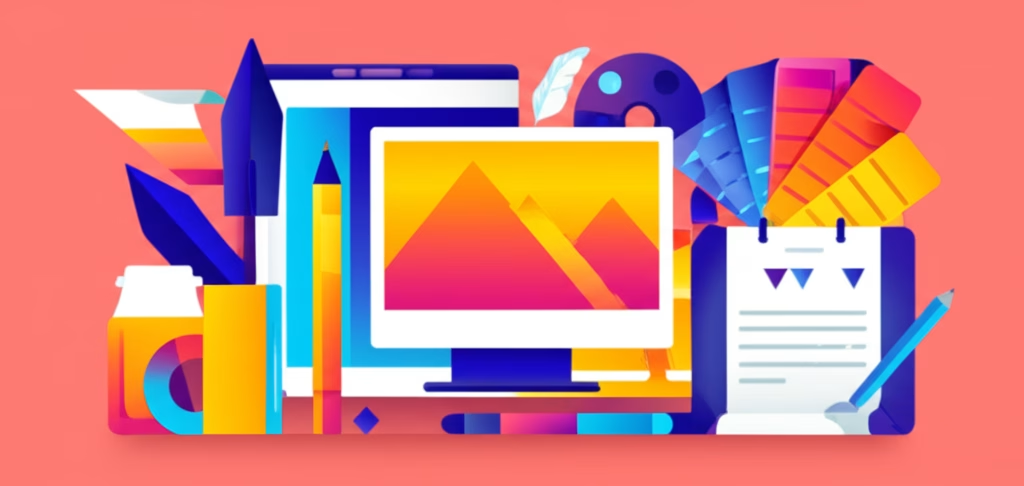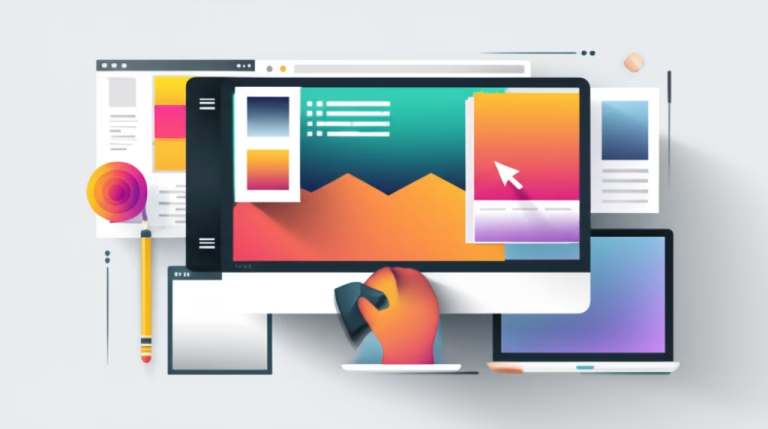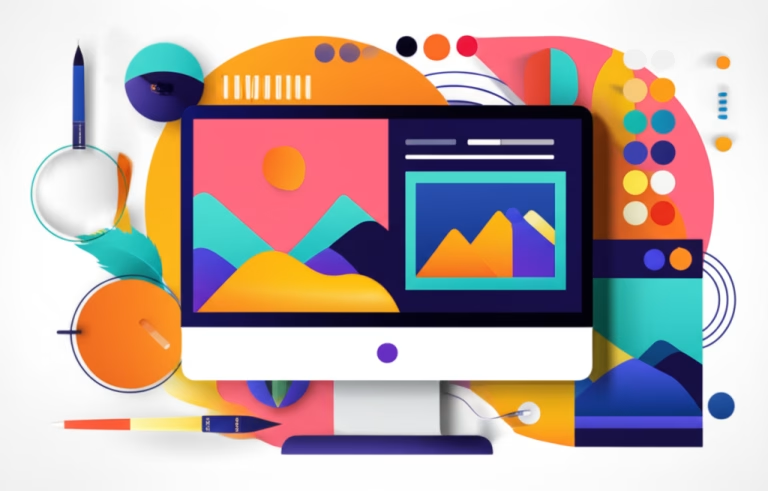Why Building a Design Portfolio is Fundamental?
Starting your design journey is exciting, but how do you show potential employers or clients what you can do? This is where your design portfolio becomes your most valuable tool. Think of it as your personal exhibition, a place to display your creative talents and skills. Without a portfolio, it’s tough for others to see your potential, no matter how good you are. It’s the key to opening doors and showing the world your unique perspective. In this article, we’ll explore why a portfolio is essential and how you can start building one that truly works for you.
Table of Contents
What Exactly is a Design Portfolio?
At its core, a design portfolio is a carefully selected collection of your best creative projects. It’s not just a random dump of everything you’ve ever made. Instead, it’s a curated showcase designed to highlight your skills, process, and problem-solving abilities in design. It tells a story about who you are as a designer and the kind of work you aspire to create.
Imagine an artist displaying their finest paintings in a gallery. Your portfolio is similar. It’s your personal gallery, presenting your designs in the best possible light. It allows people to visually understand your style, technical skills, and understanding of design principles without you having to explain every single detail verbally.
The Essential Pillars of a Great Portfolio
- Curation: This means carefully choosing only your strongest and most relevant projects. Don’t include everything; focus on quality over quantity. Select pieces that showcase the skills needed for the opportunities you want.
- Presentation: How you display your work matters immensely. Use high-quality images or videos. Show your designs clearly, perhaps with mockups or in context. Make it visually appealing and easy to navigate.
- Context: For each project, explain the story behind it. What was the problem you were trying to solve? What was your role? What was your design process? What were the results? This context turns a simple image into a powerful case study.
- Accessibility: Make your portfolio easy for people to find and view. A dedicated website is often best, but platforms like Behance or Dribbble work too. Ensure it loads quickly and looks good on different devices.
Mistakes That Can Ruin Your Portfolio
Even with great work, common missteps can make your design portfolio less effective. Being aware of these pitfalls helps you avoid them and build a stronger presentation of your abilities.
- Including Too Much Work
Problem: Showing every single project, including weaker ones, dilutes the impact of your best work and shows poor judgment.
Solution: Be highly selective. Choose only your absolute best pieces, ideally those relevant to the jobs or clients you seek. Aim for around 5-10 strong projects. - Using Low-Quality Visuals
Problem: Blurry images, poor screenshots, or inconsistent presentation make your work look unprofessional, even if the design itself is good.
Solution: Invest time in creating high-quality visuals of your work. Use mockups, present your designs in context, and ensure everything is crisp and clear. Consistency in presentation is key. - Not Explaining Your Projects
Problem: Just showing images doesn’t tell the viewer anything about your thinking process, the challenges you faced, or the results you achieved. They see the final product but not your contribution.
Solution: Write concise but informative descriptions for each project. Explain the brief, your role, the process, the tools you used, and the outcome. This demonstrates your strategic thinking and problem-solving skills. - Making it Hard to Navigate or Access
Problem: A slow website, confusing layout, or requiring downloads makes it frustrating for busy people to view your work.
Solution: Use a reliable platform or hosting. Organize your projects logically. Ensure navigation is intuitive. Make contact information easy to find. Test your portfolio on different devices and browsers. - Skipping Proofreading
Problem: Typos or grammatical errors in project descriptions look unprofessional and can undermine your credibility.
Solution: Always proofread all text carefully. Ask a friend or mentor to read through it as well. Clear writing is just as important as clear design presentation. - No Call to Action
Problem: Someone loves your work, but they don’t know what to do next or how to contact you.
Solution: Clearly state how people can get in touch for opportunities. Include your email address and links to professional profiles like LinkedIn. Make it easy for them to take the next step. - Not Tailoring Your Portfolio
Problem: Using the exact same portfolio for wildly different types of opportunities shows a lack of focus and understanding of the specific role.
Solution: If you’re applying for different types of design jobs (e.g., UI design vs. branding), consider creating slightly tailored versions of your portfolio or highlighting specific projects relevant to each application. - Ignoring Feedback
Problem: Not seeking or implementing feedback means you might be missing obvious areas for improvement.
Solution: Share your portfolio with trusted designers or mentors and ask for constructive criticism. Be open to making changes based on their insights.
Step by Step: Applying Portfolio Building to Your Projects
Ready to start building or improving your design portfolio? Here is a simple process to guide you.
- Step 1 – Define Your Goal:
Before you select any projects, think about what you want your portfolio to achieve. Are you looking for a job in a specific industry (like tech or fashion)? Do you want freelance clients for a particular type of design (like logos or websites)? Knowing your goal helps you choose the right projects to showcase.
Why it matters: A focused portfolio is more effective than a general one when targeting specific opportunities. - Step 2 – Select Your Best Work:
Go through all your design projects, including school assignments, personal work, freelance gigs, or even mockups you created for practice. Be critical. Choose the pieces that best demonstrate your skills, creativity, and ability to solve design problems. Aim for variety in project types if possible, but always prioritize quality and relevance to your goal.
How to do it: Make a list of potential projects and evaluate each one based on its quality, complexity, and relevance to your target audience. - Step 3 – Craft Project Case Studies:
For each selected project, create a “case study.” This involves writing a clear description. Explain the project’s objective, your specific role, the challenges you faced, the design process you followed, and the final outcome or impact. Use visuals to show your process, like sketches, wireframes, or different iterations. This narrative helps viewers understand your thinking.
What to include: Project title, client (if applicable), timeline, your role, project goals, your process, visuals of the work (including process work), and results. - Step 4 – Choose a Platform:
Where will you host your portfolio? A dedicated website with your own domain name (like yourname.com) is highly recommended as it gives you the most control and looks professional. However, platforms like Behance, Dribbble, or even a well-organized PDF can work, especially when you’re starting out. Choose a platform that presents your work cleanly and is easy to update.
Options: Personal website (WordPress, Squarespace, etc.), Behance, Dribbble, Readymag, PDF document. - Step 5 – Get Feedback and Refine:
Once you have a draft of your portfolio, share it with trusted friends, mentors, or other designers. Ask for honest feedback. Is it clear? Is it easy to navigate? Do the project descriptions make sense? Use their feedback to make improvements. A fresh pair of eyes can spot things you missed.
Process: Share links, ask specific questions, listen actively, and make revisions based on constructive criticism. - Step 6 – Keep it Updated:
Your design skills will grow, and you’ll create new, better projects. Your portfolio should evolve with you. Make a habit of updating your portfolio regularly with your latest and greatest work. Remove older, weaker projects. A current portfolio shows that you are actively designing and improving.
Frequency: Aim to review and potentially update your portfolio every few months or whenever you complete a significant new project.
Frequently Asked Questions about Design Portfolios
Here are some common questions beginner designers have about creating their portfolios.
Q: What if I have no professional experience?
A: Don’t worry! You can use personal projects, work created for friends or family, conceptual projects, or even high-quality mockups you design based on fictional briefs. Focus on demonstrating your skills.
Q: How many projects should I include?
A: Quality is better than quantity. Aim for around 5 to 10 of your strongest projects. It’s enough to show your range and skills without overwhelming the viewer.
Q: What format is best?
A: A dedicated personal website is generally considered the most professional option. Platforms like Behance and Dribbble are also widely used and excellent for visibility, especially when starting out.
Q: Should I include school projects?
A: Absolutely, especially if you are a recent graduate or just starting. Include your best school projects, particularly those that allowed you to explore your creativity or solve complex problems. Treat them like real-world projects in your case studies.
Q: How detailed should my project descriptions be?
A: Provide enough detail to explain the project’s purpose, your role, process, and outcome, but keep it concise and easy to read. Avoid jargon. Focus on telling the story of the project and your contribution.
Q: Do I need a separate portfolio for different design fields (e.g., UI vs. branding)?
A: It’s often beneficial to tailor your portfolio slightly for different types of roles or clients. You don’t necessarily need entirely separate portfolios, but you can curate which projects are most prominent or create specific sections.
Conclusion: Your Portfolio in Practice
Building a design portfolio might seem like a big task, but it’s a crucial step in your journey. It’s your opportunity to showcase your talent, explain your process, and connect with potential opportunities. By curating your best work, presenting it professionally, adding context, and making it accessible, you create a powerful tool that speaks for you.
Don’t wait for the perfect moment or the perfect project. Start with what you have, select your strongest pieces, and begin building. Your portfolio will evolve as you grow as a designer. Keep refining it, seek feedback, and use it confidently to pursue your design dreams. It’s the foundation for landing your first design job or attracting your first client.



